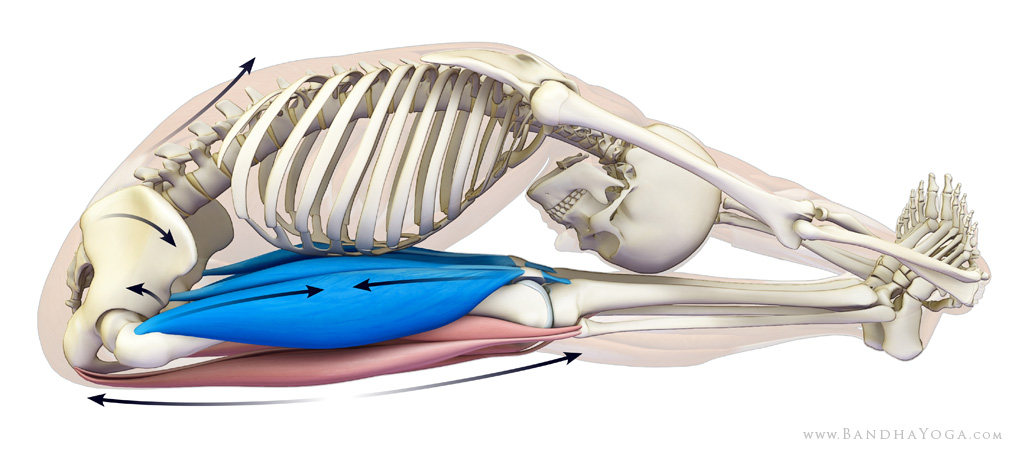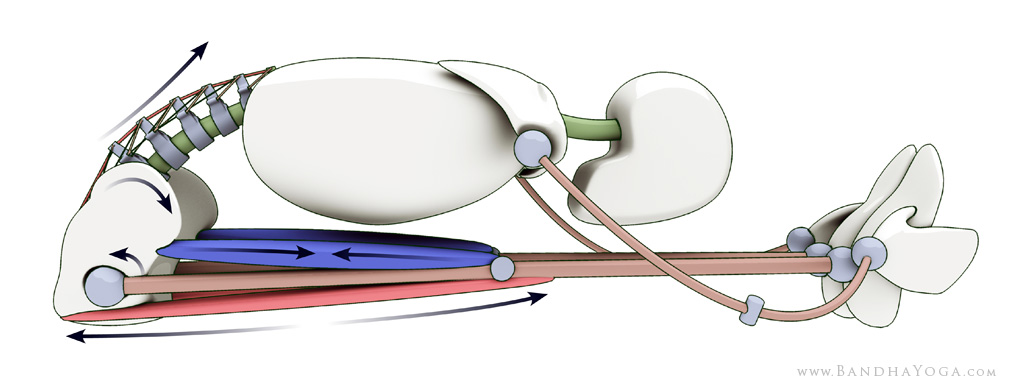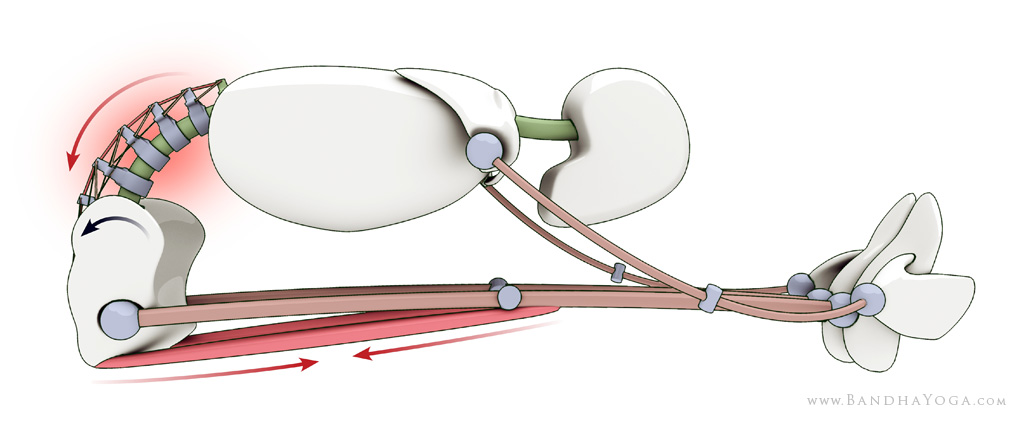In this post we take a look at one of the leading causes for emergency room visits from yoga—lower back strains—and examine preventative strategies that may help in reducing the risk of this injury while enhancing the benefits of Hatha yoga practice. This series begins with info on joint rhythms and how understanding them can help in preventing injury.
1. Greenfield, Paige. "Will Yoga Actually Wreck Your Body? | Men's Health News." Men's Health Magazine. 20 Jan. 2012. Web. 24 Jan. 2012. <http://news.menshealth.com/yoga-men-injuries/2012/01/20/>.
Also, I would like to recommend reading Dana Santas interview in Men’s Health magazine entitled “Will Yoga Really Wreck Your Body?”1 Dana is an experienced yoga practitioner and teacher who works with elite athletes from a number of professional sports. She is a great resource for information on integrating yoga into sports training regimens. Next, please read (and circulate) Jason Amis’ counterpoint to a recent article published in the New York Times, which includes a clear and in-depth analysis of much of the data that was referenced. Extremely well done – Kudos!
Jason provided me with the NEISS data relating to emergency rooms visits for yoga injuries in 2010 and I’ve done some preliminary analysis, which I will share with you. Data like this is extremely valuable, because it allows us to find ways to identify risks and then reflect on how to prevent them – a variation for the yoga community on the Sanskrit term “Atma Vichara,” or self inquiry. Here are my impressions: first, I was impressed by the relative safety of the practice compared to other activities. Second, it was clear to me that many of the injuries resulting in ER visits were potentially preventable. Think of it this way: there are injuries that are unpredictable, like stubbing your toe (also reported as an ER visit related to yoga), and there are those that are potentially preventable through application of common sense and knowledge of the body. Analysis of data like this provides an opportunity to identify preventable injuries and eliminate unsound practices that may have caused them in the first instance.
For example, lower back strains were the most common single diagnosis reported in the data for ER visits relating to yoga for 2010 (from the NEISS report). In fact, back strains are also a common workplace injury and much research is focused on the prevention thereof. Nevertheless, people still often strain their back at work, especially during situations in which they forget or are unable to implement preventative measures.
There is never any reason to rush or force oneself into a yoga pose, so it is possible that many of the back strains that occurred were preventable through working with proper technique, using modified poses where indicated and not rushing. Then, the practice becomes potentially therapeutic for the lower back, as has been demonstrated, rather than injurious.
Since I suspect that a percentage of these lower back strains may have arisen during forward bending poses, let’s begin by looking at the concept of lumbar-pelvic and pelvic-femoral rhythm in the forward bend Paschimottanasana.
 |
| Pashimottanasana illustrating lumbar-pelvic and pelvic-femoral rhythm. |
Lumbar-pelvic rhythm refers to a type of joint coupling whereby tilting the pelvis in one direction produces a corresponding movement in the lumbar. Tilting the pelvis back (tucking the tailbone) produces flexion of the lumbar vertebrae. Tilting the pelvis forward produces extension. (I give a practical example of the former in a previous post on engaging the abs and gluts in Chaturanga.)
Pelvic-femoral rhythm refers to joint coupling at the hip whereby flexing the femur produces a corresponding forward tilt of the pelvis – and vice versa for extending the femur.
I access these rhythms when I work with yoga poses – especially forward bends – by gently engaging muscles that improve hip flexion and anterior tilt of the pelvis (joint coupling between the pelvis and the hip) and releasing the muscles that can limit hip flexion. In this manner, the forward bend comes more from the hip than the lumbar spine.
The hamstrings, for example, are hip extensors. They can limit hip flexion. Contracting the quadriceps contributes to releasing them through reciprocal inhibition. One head of the quadriceps, the rectus femoris, is also a synergist of hip flexion (and anterior tilt of the pelvis). Thus, engaging the quadriceps helps to produce forward bending from the hips rather than the lumbar. In general, when practicing forward bends, movement of the pelvis on the hips should be equal to or greater than movement of the lumbar spine in relation to the pelvis, otherwise flexion is concentrated in the lower back.
As an aside, I also use periodic gentle muscular engagement of the quads when I am practicing a longer duration relaxed forward bend that is directed towards lengthening myofascial sheaths. Periodically engaging the agonists – or yang side of a stretch – does not diminish the lengthening on the antagonist (yin) side. In fact, it can enhance it both biomechanically and physiologically. This engagement also re-establishes alignment and mental focus. The Mat Companion Series provides a step wise approach to understanding the various muscles in the poses from this perspective as well.
 |
| Pashimottanasana illustrating joint rhythm with quadriceps engaged. |
As an aside, I also use periodic gentle muscular engagement of the quads when I am practicing a longer duration relaxed forward bend that is directed towards lengthening myofascial sheaths. Periodically engaging the agonists – or yang side of a stretch – does not diminish the lengthening on the antagonist (yin) side. In fact, it can enhance it both biomechanically and physiologically. This engagement also re-establishes alignment and mental focus. The Mat Companion Series provides a step wise approach to understanding the various muscles in the poses from this perspective as well.
Now, let’s look at what happens when we eliminate engaging the quads, for example, out of fear that the rectus femoris will cause “congestion”. We lose reciprocal inhibition of the hamstrings, which remain tight through the action of the muscle spindle in a stretch. This limits hip flexion. We also lose the contribution of the rectus femoris to hip flexion and forward tilt of the pelvis. The result is that the forward bend is produced more from the lumbar than the hips, which may contribute to lower back strain. Thus, avoiding an imaginary problem potentially causes a real one. For more info on the rectus femoris not causing “congestion”, see our blog post on how misguided cautions decrease benefits and increase risks.
 |
| Pashimottanasana illustrating joint rhythm without engaging the quadriceps. Note the increased lumbar flexion. |
Unsound theory is like a fly in the ointment. These things become “memes” that get circulated as if they were based on truth. And although such theories are often not based in reality, they can have manifestations in the real world, including a potentially increased incidence of back strains and other injuries. These problems then get sensationalized in the media and so on. Ironically, such media coverage can lead to well considered analysis – like Jason’s– which then helps to identify and eliminate potentially harmful disinformation and implement an affirmative strategy of prevention.
If you suffer from back pain, be sure to consult your physician to determine the cause; work under the guidance of a physician to manage your pain (see our full disclaimer here).
Great seeing you all again! Check in next week for Part Two of this series on preventative strategies for lower back strains in yoga. Also, be sure to visit us on Facebook for your free Chakra poster and e-book.
Namaste’
Ray and Chris